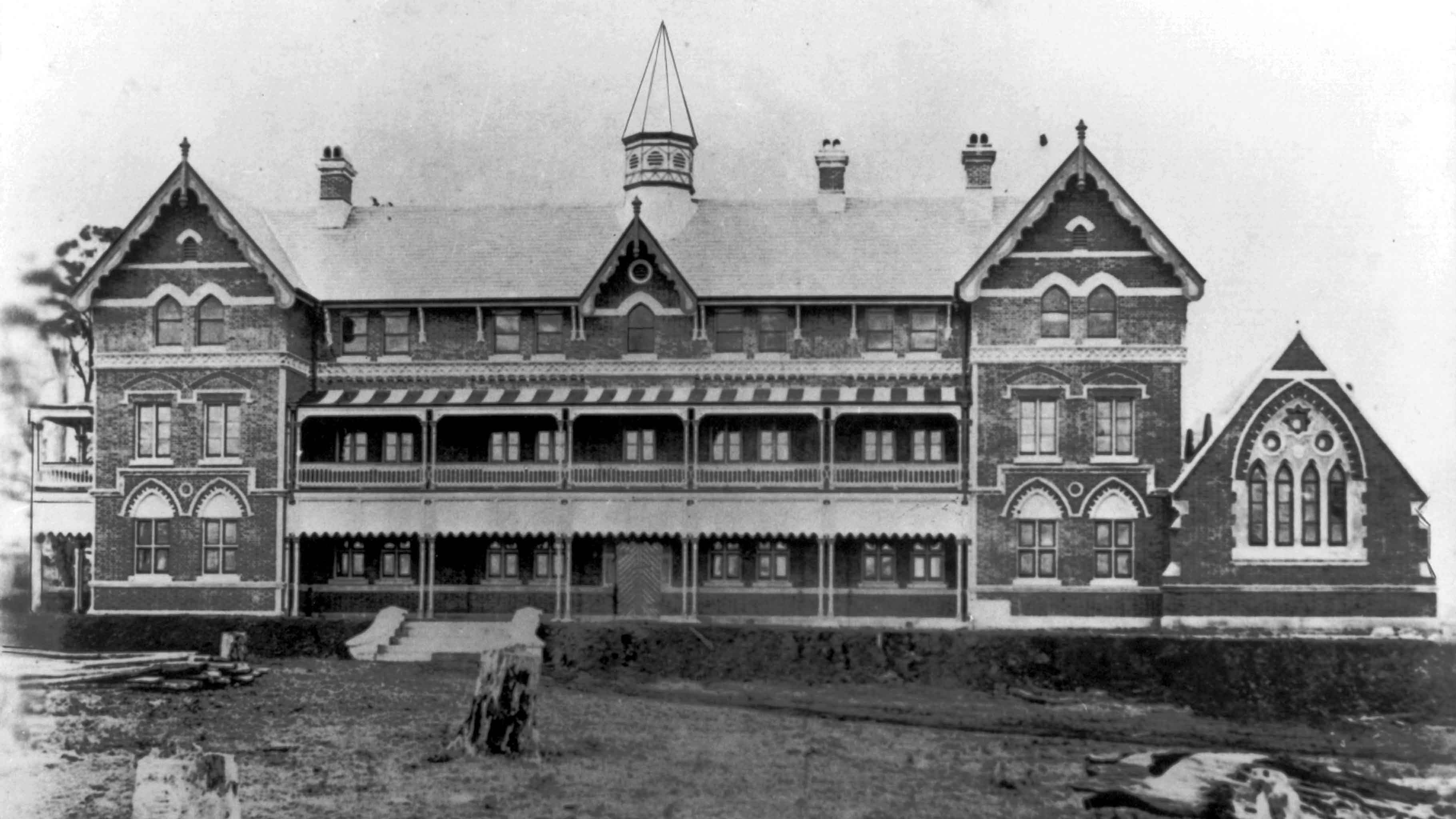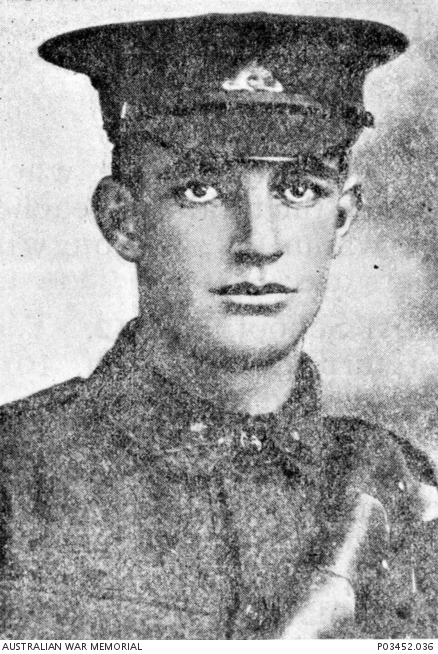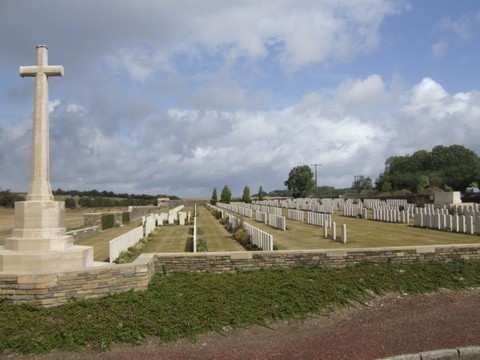Virtual War Memorial link The family of W.M. Longwill had strong connections with rural industries on the Darling Downs. Two sons of the family were occupied as managers on properties, while their parents John and Lucy Longwill lived in the Brisbane suburb of Albion. Both sons joined the AIF. The younger son, known in the family as Bill, was William Matthew Longwill. Bill signed up first, in Brisbane, at the age of 24 years and 3 months, on 17 August 1915. His brother, Charles (Chas), joined a year later, at the age of 27.
The brothers were born at Warwick, about 90 kilometres south of Toowoomba. They both attended the Toowoomba Grammar School, Charles graduating in 1905 and Bill three years later. Bill was a tall lad of 6 feet, weighing 161 pounds, with a dark complexion, brown eyes and black hair. He was of the Church of England religion.
With his strong rural background Bill was firstly posted to the Light Horse as part of the 13th Reinforcements of the 5th L. H. Regiment, made up mostly of Queenslanders. He sailed from Brisbane on 3 January 1916 aboard A55 Kyarra. At some point before he reached Egypt he was transferred to the 2nd L. H. (also from Queensland), but once at the bases in Egypt, following the withdrawal from Gallipoli, Bill became part of the general re-organisation of the AIF that occurred to allocate forces for service in Europe and the Middle East. He was transferred to the artillery and embarked for France on 20 June 1916 as a gunner with the 14th Field Artillery Brigade (AFAB).
Bill Longwill served with distinction in several artillery units in France: the 14th FAB, until September 1916; the 25th FAB until January 1917; and the 13th FAB through 1917 and 1918. He was involved in the Somme campaign of 1916 and the Ypres battles of 1917, where many artillerymen lost their lives. In 1918 Bill took part in the defensive battles to stop the German advances of March and April. In May he was gassed in action but was able to return to his unit after two weeks. When the Allies went over to the offensive in August Bill was near Wiancourt in France. Early in the morning of 8 October 1918, Bill’s battery was preparing to open fire to continue the attack. At about 4.00am, a German aeroplane attacked their position. A bomb blast killed Bill and three other gunners.
The records of the Red Cross hold several eye-witness accounts of the bombing that took the lives of the artillerymen, just before dawn, (o500hrs) as they were about to open up on the German lines. Bill’s comrades described him as a “jolly fine chap”; and, “there was no more popular man in the battery”. Bill was “badly knocked about” with extensive wounds and died almost instantly. He was buried early the next morning by Chaplain Rev McQueen, in the Bellicourt British Cemetery (grave I.B.5), about 12 kilometres north-west of St. Quentin. He lies there today, one of 1200 British and Australian soldiers.
Bill Longwill was one of the last Australian soldiers to die in combat in the Great War, having served over three years. His brother Chas, also an artilleryman (Charles Longwill 3378), was able to attend his funeral. Chas survived the war, returning in 1919. Bill’s parents received his medals, plaque and scroll.
Toowoomba Grammar School Archive Records state that he started at the school on 31st Janaury 1905 and left on 29th June 1906. The School Magazine of November 1918 states, ‘ LONGWILL, W. M.-Eldest son of John Longwill, of Brisbane-at School 1909. Killed in action in France, October 8th, 1918.’
Artillery Brigades – Reference Other AIF Units – Following the Twenty-Second (anzac-22nd-battalion.com)
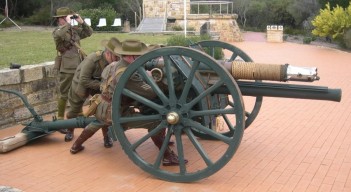 Artillery and its effective use proved to be one of the most decisive weapons during the First World War, with about one in five of the front-line troops serving in the British Army being in the Artillery. For the Australians each of the five AIF Infantry Divisions had its own artillery comprising of three Artillery Brigades per Division, containing twelve x 18 pounder guns divided between its three Field Artillery Batteries, and one Howitzer Battery containing four x 4.5 inch howitzers. In addition each Division had a Howitzer Brigade again with four x 4.5 inch guns. In January 1917 the artillery was reorganised with each battery increasing to six guns, but with the Brigades in each Division reduced from three to two. The generally
Artillery and its effective use proved to be one of the most decisive weapons during the First World War, with about one in five of the front-line troops serving in the British Army being in the Artillery. For the Australians each of the five AIF Infantry Divisions had its own artillery comprising of three Artillery Brigades per Division, containing twelve x 18 pounder guns divided between its three Field Artillery Batteries, and one Howitzer Battery containing four x 4.5 inch howitzers. In addition each Division had a Howitzer Brigade again with four x 4.5 inch guns. In January 1917 the artillery was reorganised with each battery increasing to six guns, but with the Brigades in each Division reduced from three to two. The generally  horse drawn 18 Pounder was the main field artillery weapon employed by the British Army, and the mainstay of the Australian Divisional artillery during WW1. Similarly the 4.5 Howitzer (pictured left) was the standard field or ‘light’ howitzer. Both guns calibre and hence shell weight were bigger than the German or French equivalents. The majority of the heavy artillery units supporting the Australian divisions during WW1 were British, although two Australian heavy batteries were raised from the regular Australian Garrison Artillery. These were the 54th Siege Battery, which was equipped with 8-inch howitzers, and the 55th with 9.2-inch howitzers.
horse drawn 18 Pounder was the main field artillery weapon employed by the British Army, and the mainstay of the Australian Divisional artillery during WW1. Similarly the 4.5 Howitzer (pictured left) was the standard field or ‘light’ howitzer. Both guns calibre and hence shell weight were bigger than the German or French equivalents. The majority of the heavy artillery units supporting the Australian divisions during WW1 were British, although two Australian heavy batteries were raised from the regular Australian Garrison Artillery. These were the 54th Siege Battery, which was equipped with 8-inch howitzers, and the 55th with 9.2-inch howitzers.
 Within the Artillery were Trench Mortar Batteries. Each of the five Divisions had one battery containing four heavy 240 millimetre mortars firing 152lb bombs, plus three medium trench-mortar batteries firing spherical 60lbs bombs with short iron handles – commonly known as ‘plum puddings’ (pictured right), and twenty-four light trench mortars. Men for the heavy and medium trench mortar batteries were obtained by calling for volunteers from the artillery. Additionally within the infantry, each brigade was given two four-gun batteries containing the simple and rapidly firing light trench mortar Stokes gun.
Within the Artillery were Trench Mortar Batteries. Each of the five Divisions had one battery containing four heavy 240 millimetre mortars firing 152lb bombs, plus three medium trench-mortar batteries firing spherical 60lbs bombs with short iron handles – commonly known as ‘plum puddings’ (pictured right), and twenty-four light trench mortars. Men for the heavy and medium trench mortar batteries were obtained by calling for volunteers from the artillery. Additionally within the infantry, each brigade was given two four-gun batteries containing the simple and rapidly firing light trench mortar Stokes gun.
External Links
Australian War Memorial Honour Roll
National Archives of Australia Military Records
Australian Red Cross Society Wounded and Missing
AWM4 AIF unit war diaries 13/40/32 HQ 13RH FAB OCT 1918
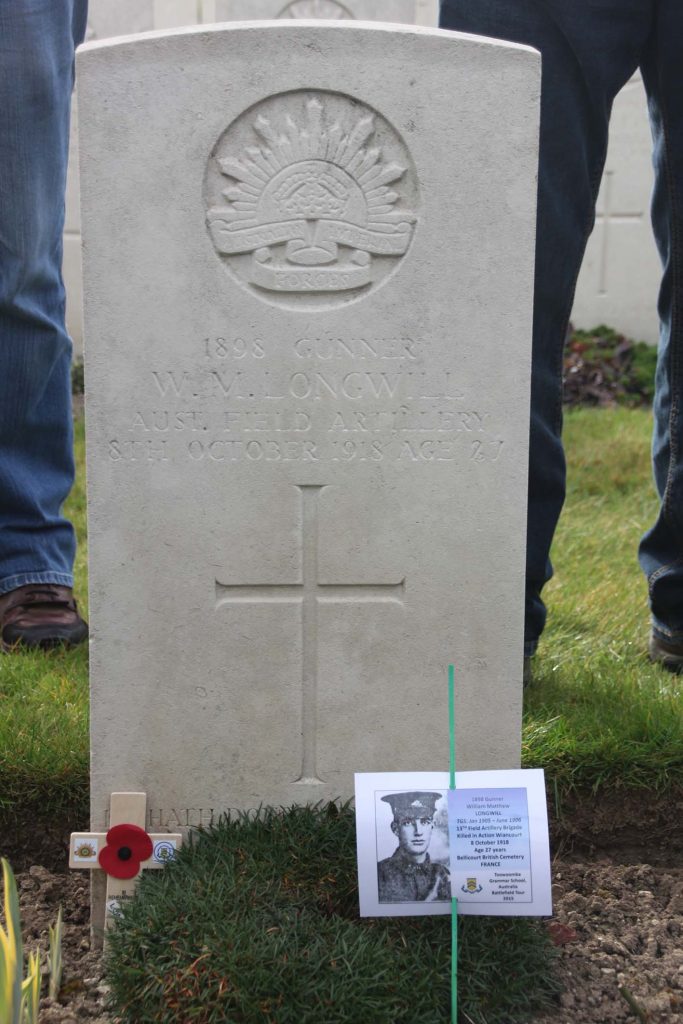
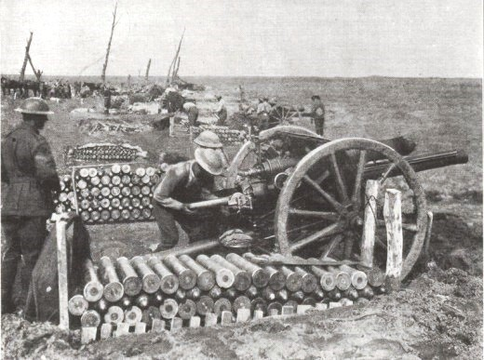
Australian 18 pounder guns
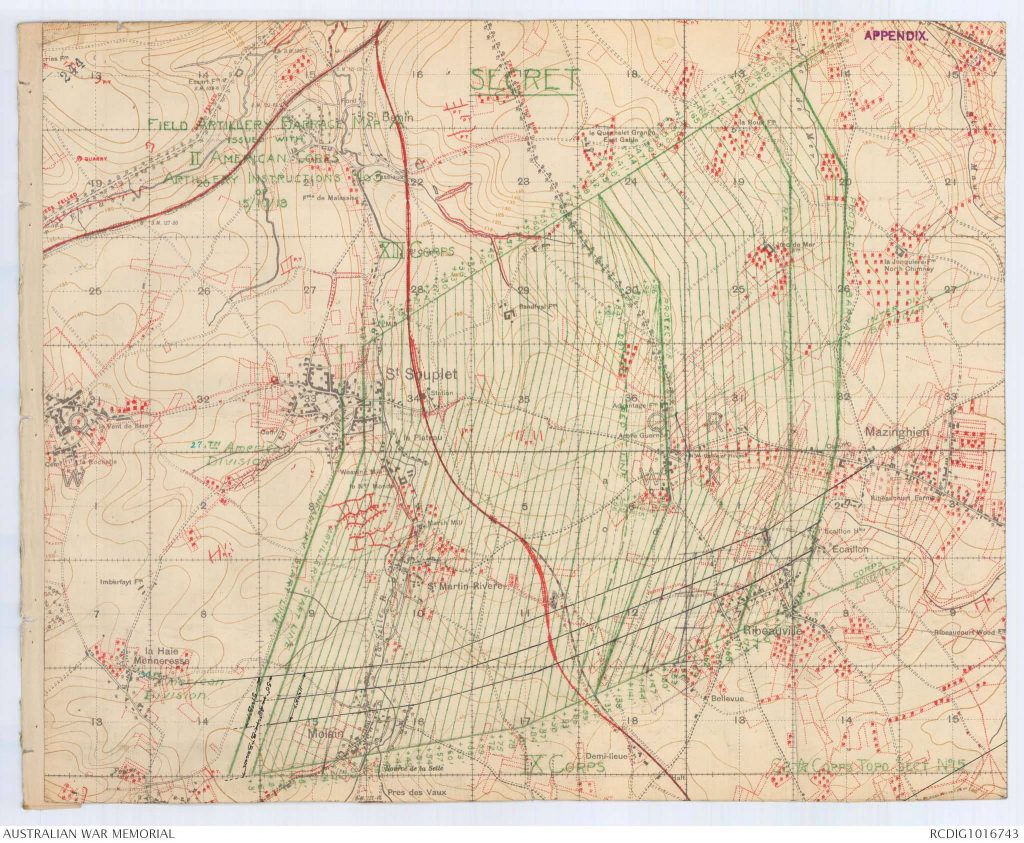
Field Artillery Map 15 October 1918
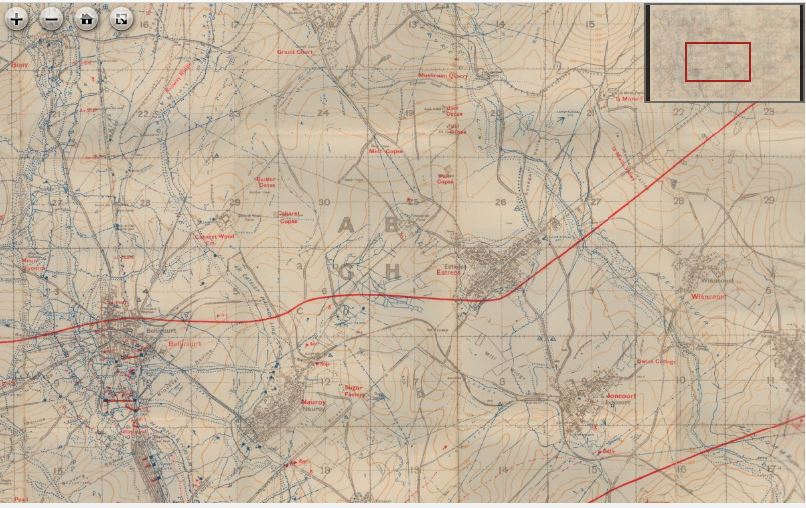
Location of Bellicourt and Waincourt, France 1918

